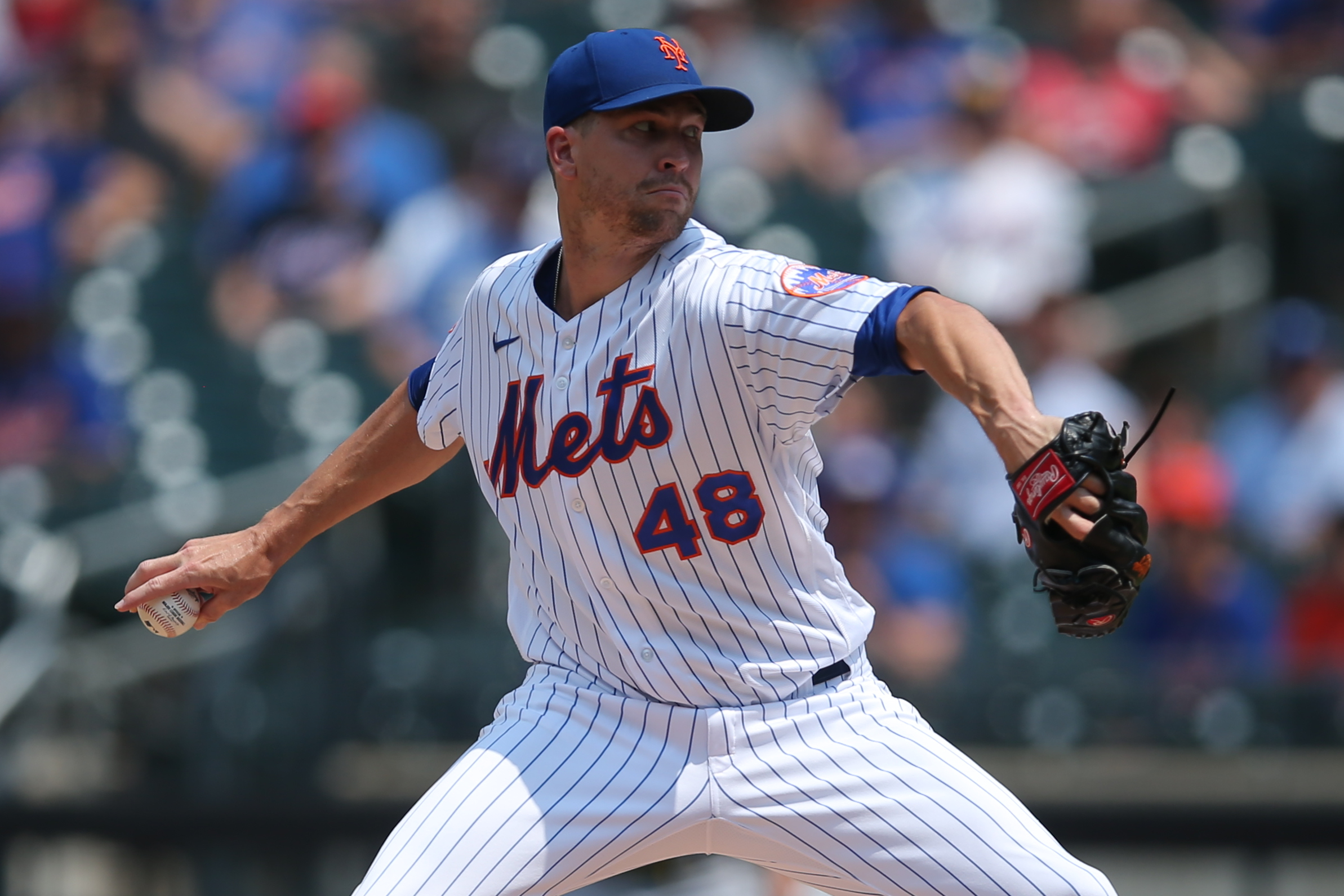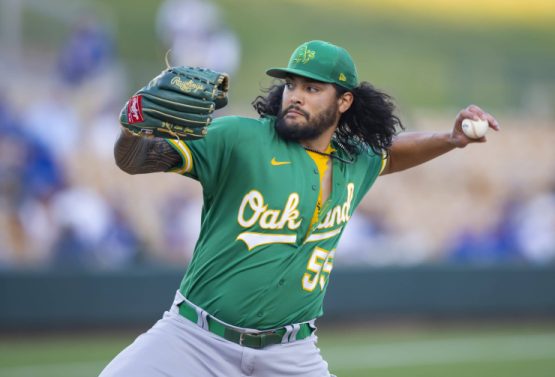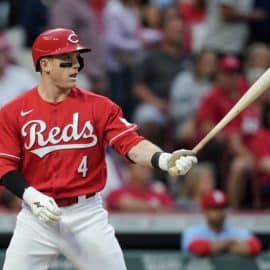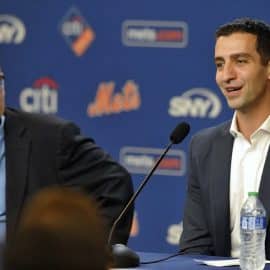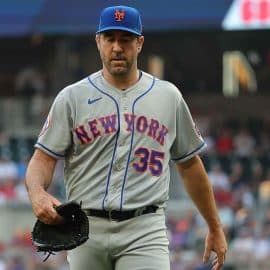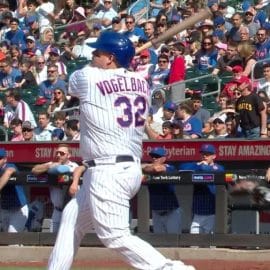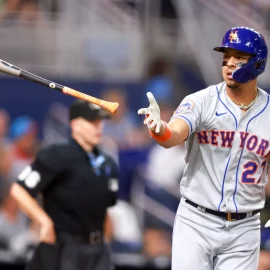Now that the 2021 season is over for the New York Mets, we will spend the next several weeks taking a look at the big picture. This deep dive will be broken down into phases every weekday, continuing today with a look at the Mets’ starting pitching.
The highlight of the season, at least in the first half, for the New York Mets was their starting pitching. Jacob deGrom was pursuing Bob Gibson’s historical season as a runaway Cy Young Award front runner while Taijuan Walker made the All-Star Team and Marcus Strom easily could have gone as well. The second half was a different story. Let’s go down the line for each starter (not counting opening relievers like Aaron Loup) and break down their year.
Starting Pitcher Season in Review
Jacob deGrom
The half-season that deGrom put together was absolutely brilliant as his ERA didn’t creep above one until his final start of the first half. That game turned out to be the last time we saw deGrom pitch due to a nebulous elbow injury that was slow to heal. The Mets wisely shut deGrom down once they were mathematically eliminated and he should be ready to go for spring training in 2022.
Grade: A+
Marcus Stroman
Stroman was the Mets’ most durable starter, making 33 starts and tossing 179 innings one year after opting out of the 2020 season. The increased innings load did take a toll on Stroman by the end of the season but he still produced a quality 3.02 ERA and led the Mets with 10 wins. Stroman figures to be a priority for the Mets this offseason as he enters free agency.
Grade: A
Taijuan Walker
Walker’s first half was stellar as he made his first career All-Star appearance after going 7-3 with a 2.66 ERA. The second half was unkind for Walker, who never registered another win and pitched to an ERA well north of seven. There is an asterisk here, however, as Walker worked significantly more innings than he had in several years due to injury so he clearly hit a wall in terms of performance. The innings load should pay off for Walker with a more durable performance in 2022.
Grade: C+
Tylor Megill
The Mets had no plans to use Megill in the big-league rotation but a rash of injuries forced their hand in mid-June. Megill did hold his own as a rookie but, like Walker, hit an innings wall and saw his performance slide down the stretch. The overall numbers (4-6 with a 4.52 ERA) don’t look pretty but Megill did prove he can hold his own as a major leaguer.
Grade: B-
David Peterson
The Mets saw Peterson take a dip from year one to year two as the league adjusted to him pretty quickly. Peterson struggled for most of the first half before suffering a season-ending foot injury in June, going 2-6 with a 5.54 ERA.
Grade: D
Carlos Carrasco
A hamstring injury in spring training sidelined Carrasco for nearly four months and the Mets had to rush him back into the rotation without being fully stretched out. Carrasco predictably struggled, particularly with giving up runs in the first inning, and suffered through a lost season where he went 1-5 with a 6.04 ERA. A healthier 2022 should lead to a bounceback effort from Carrasco but 2021 was ugly.
Grade: D
Rich Hill
The Mets acquired Hill to fill a hole in their rotation and he did his job very well. Hill made 12 starts as a Met and went 1-4 with a 3.84 ERA, a solid performance from a guy who isn’t going to provide a ton of innings at age 41. Given the uncertainty with injuries in the 2022 rotation, the Mets should strongly consider bringing Hill back if he is willing to work out of the bullpen at least part-time.
Grade: B
Joey Lucchesi
Lucchesi struggled so much out of the gate that he nearly pitched himself out of the Mets’ rotation. A mechanical adjustment helped Lucchesi unlock the churve and made him a reliable member of the Mets’ rotation until he tore his ulnar collateral ligament in June. Lucchesi underwent Tommy John surgery and is now out until at least the middle of 2022, a blow to the Mets’ rotation depth.
Grade: C
Jerad Eickhoff
A depth option, Eickhoff got hit hard on several occasions and was never more than a filler option when the Mets were short-handed in the rotation. The Mets did Eickhoff a disservice in late July by signing him off the street to start against Atlanta after he had been designated for assignment, predictably leading to Eickhoff getting shelled in his final appearance of the year.
Grade: D
Trevor Williams
A lightly regarded secondary piece in the Javier Baez trade, Williams was effective in three starts for the Mets. Williams pitched to a 3.08 ERA and has another year of team control remaining if the Mets can figure out a way to keep him since Williams can refuse a minor league assignment due to his service time.
Grade: B
Robert Stock
The Mets claimed Stock off waivers and he made two starts in June before tearing his hamstring. The injury knocked Stock out for the rest of the season and he might not be in the team’s long-term plans.
Grade: Incomplete
Noah Syndergaard
A litany of setbacks delayed Syndergaard’s return from Tommy John surgery until late September when he made a pair of one-inning “starts”. The results don’t really matter as much as seeing Syndergaard back on a big-league mound for the first time since 2019. Syndergaard has hinted that he wants to come back in 2022 and a qualifying offer should get the job done.
Grade: A (for effort)
Jordan Yamamoto
The Mets got Yamamoto as a depth starter but he made just one start in May before suffering a serious shoulder strain. Yamamoto missed several months before finishing the year on a pro-longed rehab assignment due to a lack of need for him at the big league level. The team’s decision for Yamamoto in 2022 is complicated since he is out of options and would need to pass through waivers before the organization can retain him.
Grade: Incomplete
Add The Sports Daily to your Google News Feed!
